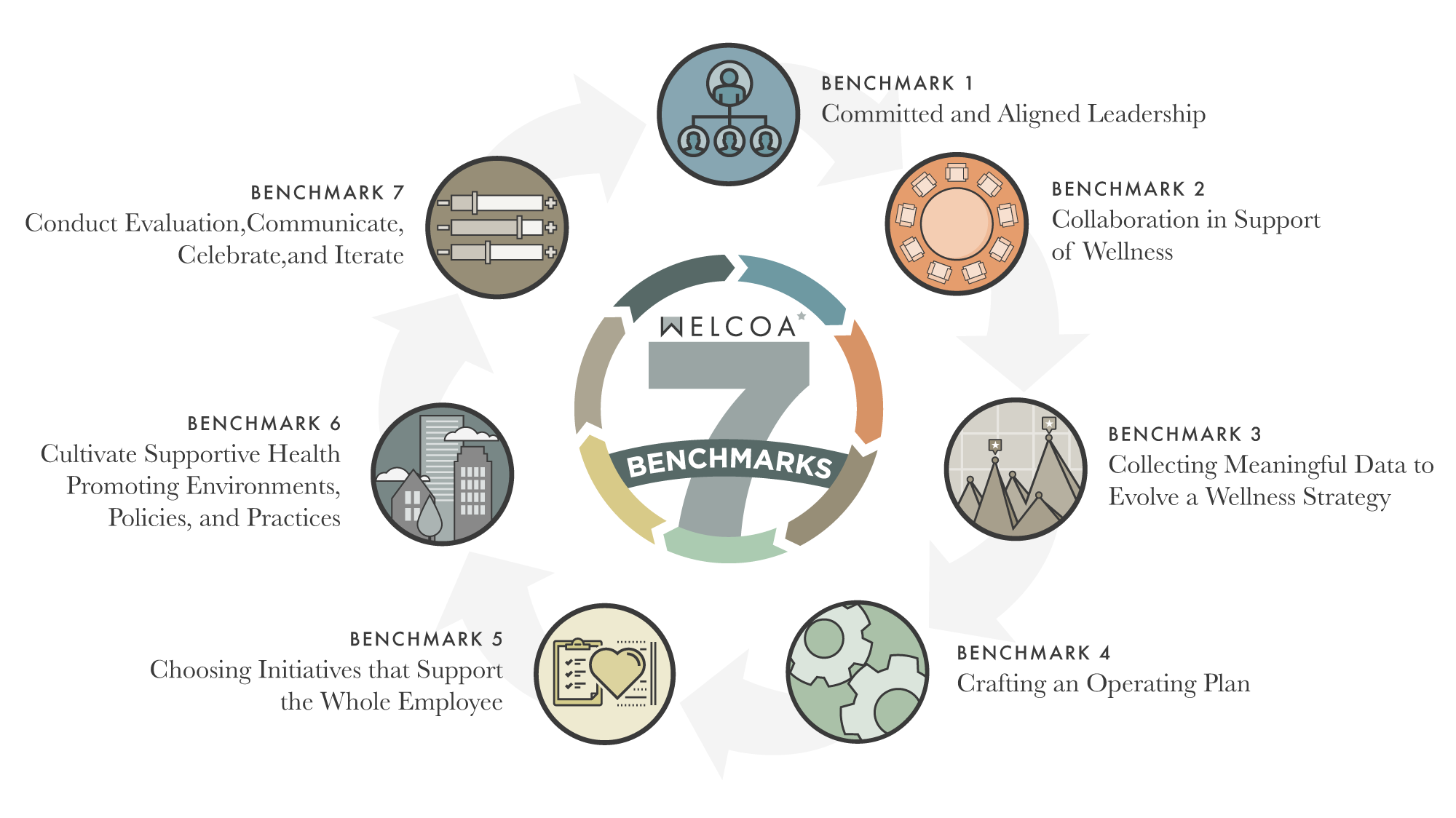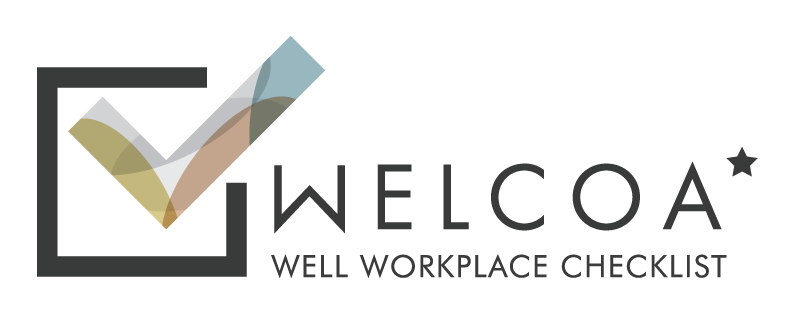Your Welcoa membership has expired.
Evaluating your wellness program with WELCOA’s Well Workplace Checklist.
WELCOA’s Well Workplace Checklist™ helps you assess and understand exactly what you need to make your wellness program a success. Newly updated to encompass a broader, more relevant view of employee wellness, this 150-question interactive assessment measures your organization’s alignment with WELCOA’s 7 Benchmarks™. This logic model is comprised of seven iterative steps, that when completed, ensures you have a meaningful and successful wellness initiative designed to achieve the results you want.

The Checklist measures your organization’s alignment within WELCOA’s 7 Benchmarks by:
Ensuring leadership understands the value of wellness to the organization
(Benchmark 1)
Protecting your program from silos
(Benchmark 2)
Understanding the needs of your population and how you are currently doing at achieving your organization’s goals
(Benchmark 3)
Creating a strategic plan that will ensure success
(Benchmark 4)
Choosing initiatives that will address both organizational and programmatic goals for wellness
(Benchmark 5)
Understanding the ways in which culture and the environment are working against you and removing those barriers
(Benchmark 6)
Evaluating your success and communicating that success to leadership and other stakeholders
(Benchmark 7)
How does the Checklist measure my data?
Benchmark 1
Committed and Aligned Leadership
Benchmark 1 begins with understanding how important leadership support is to your organization—or those you consult—to build a successful culture of wellness. Answer questions about your organization’s vision or strategy for wellness.
FOR EXAMPLE:
Are your organization’s vision and values aligned with employee wellness?
Benchmark 2
Collaboration in Support of Wellness
Whether you have a budgeted wellness force or are riding solo, wellness teams should be representative of your culture and must work together to build on your organization’s wellness goals. Answer questions about the makeup of your wellness program in your organization.
FOR EXAMPLE:
Does your organization have an informal or formal structure for supporting employee wellness?
What business units are involved in your wellness strategy?
Benchmark 3
Collecting Meaningful Data to Evolve a Wellness Strategy
Once you’ve established your goals and created a cohesive team, it’s time to begin implementing your wellness strategy—but where do you start? Data collection should measure what matters most to both your organization and your employees. Answer questions about how your organization currently measures information about your team.
FOR EXAMPLE:
Do you collect to assess achievement of the organization’s strategic goals?
Benchmark 4
Crafting an Operating Plan
Before you can begin to choose and implement interventions and programs, it’s important to create an operating plan. Documenting the details of your wellness initiatives, with your goals in mind, will help you build a roadmap to guide efforts and investments in workplace wellness. Answer questions about your organization’s current strategy for wellness.
FOR EXAMPLE:
Do you have a formal operating plan in place for your wellness strategy including roles/responsibilities, timelines, budgets, and evaluation metrics?
Benchmark 5
Choosing Initiatives that Support the Whole Employee
Choosing initiatives may seem like a piece of cake—but aligning your organizational goals, collaborative teams, data and wellness strategy will help you bring the right interventions to your organization in support of healthy and thriving employees. Answer questions about the types of interventions and programs your organization has in place.
FOR EXAMPLE:
What programmatic approaches are you using to achieve your goals?
Benchmark 6
Cultivate Supportive Health Promoting Environments, Policies, and Practices
Creating a successful worksite wellness program should champion whole employee wellness. Answer questions about the policies and practices ingrained in your organization’s wellness initiatives.
FOR EXAMPLE:
How supportive are the organization’s environment, policies & practices including:
The built environment?
Access to private spaces?
Access to healthy food?
Benefits plan design?
Worksite and workstation conditions are designed to support more physical activity?
Benchmark 7
Conduct Evaluation, Communicate, Celebrate, and Iterate
Understanding the impact of your wellness efforts using the data you collected early on will help you determine how successful your approach has been and how to improve! Answer questions about how your organization evaluates and determines the success of your wellness efforts.
FOR EXAMPLE:
What kinds of data are you collecting to evaluate achievement of your program’s goals?
How to begin with WELCOA’s 7 Benchmarks.
Our introductory webinar will introduce you to WELCOA’s 7 Benchmarks, our credible framework that can be tailored to your organization’s values, mission, vision and goals for employee wellness.
Watch Now






